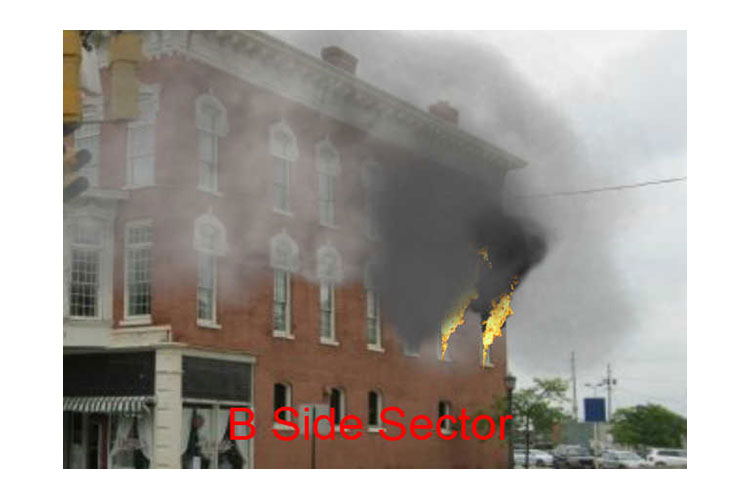
By Joseph Pronesti
In 1995, I was promoted to lieutenant. In my department, that meant I either rode in the front seat of our rescue truck responding to every medical emergency call in the city, or as an engine officer commanding a driver/operator and firefighter. My biggest responsibility was making sure the fuel tank was “dipped” so we never ran out of diesel fuel and that we never ran out of toilet paper (a no-no in the firehouse!)
First-line supervisors like I was back then are used to supervising a few people, but they are not used to handling a sector officer position in which they could oversee a dozen or more firefighters who may not even be from their own department. In many cases, I seen departments fail to consider increasing their command officer staffing on a working fireground, instead placing company officers in this very important position with little to no training.
Today’s fireground is so complex that, although I absolutely despise the term “check box commander,” It can be very easy to check the boxes on a command sheet and place Lt. Smith in charge of the B Side, expecting everything will be fine.
On the night of October 12, 2015, Kansas City (MO) Fire Department (KCFD) Firefighters Larry Leggio and John Mesh died when these two brave brothers were on the outside of a structure located at 2608 Independence Avenue when the D side wall collapsed. A contributing factor noted in the after-action report discussed issues with sector officer discipline. This begs the question for all departments: do you have faith and, more importantly, the correct training in place for your front-line supervisors to command a sector? In my opinion, if you can place a chief in charge of a sector–whether that chief is from your department or mutual aid–do it.
RELATED: Incident Command and the Mayday
It’s easy to get “lost in the fog” and check the box on your command sheet saying all your sides are covered. But are they really covered by competent, well-trained hands? One more item to prepare now for prior to your next event: using simulations and reviewing building construction is a great start, but those who might be placed in a sector position need to be taught to have the courage to say no when confronted by a crew or company that wants to hold a line to hit a hot spot or get a little too close to just see what’s going on. In such a case, saying ‘no’ might just save the most lives.

Simple field trips with the company officers who may be pressed into a sector position can go a long way when the time comes for them to be in charge of an area during a firefight.

Simulations, videos, past event reviews, etc. can all help in training sector officer positions.
The story of Eastern Flight 401
A good correlation between the problems of an inexperienced sector officer and what can happen on the fireground is the story of Eastern Flight 401 which I learned about tuning into a Fire Engineering Webcast recently.
Eastern Flight 401 crashed into the Florida Everglades at 11:42 pm December 29, 1972, causing 101 fatalities. All three pilots, two of 10 flight attendants, and 96 of 163 passengers died; 75 passengers and crew survived. The crash occurred while the entire flight crew was preoccupied with a burnt-out landing gear indicator light. They failed to notice that the autopilot had inadvertently been disconnected and, as a result, the aircraft gradually lost altitude and crashed.
Again, think about the young company officer who is pressed into a sector officer position. He or she can become fixated on tactical issues and lose the overall focus of the assignment. If getting command level officers is a problem, please consider a training program using simulations or simple building tours in which you have those who could be pressed into a sector spot analyze the building with an overall focus on the big picture.
Collapse can happen in an instant. Surround your battlefield with trained people, not check boxes!
JOSEPH PRONESTI is a 26-year veteran of the Elyria (OH) Fire Department, where he is an assistant chief and shift commander. He is a graduate of the Ohio Fire Chiefs’ Executive Officer program and a lead instructor at the Cuyahoga (OH) County Community College Fire Academy. He is a contributor to fire service publications and sites, including Fire Engineering. He can be reached at efdcaptain33@gmail.com.
 JOSEPH PRONESTI is a 26-year veteran of the Elyria (OH) Fire Department, where he is an assistant chief and shift commander. He is a graduate of the Ohio Fire Chiefs’ Executive Officer program and a lead instructor at the Cuyahoga (OH) County Community College Fire Academy. He is a contributor to fire service publications and sites, including
JOSEPH PRONESTI is a 26-year veteran of the Elyria (OH) Fire Department, where he is an assistant chief and shift commander. He is a graduate of the Ohio Fire Chiefs’ Executive Officer program and a lead instructor at the Cuyahoga (OH) County Community College Fire Academy. He is a contributor to fire service publications and sites, including 
